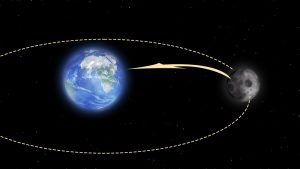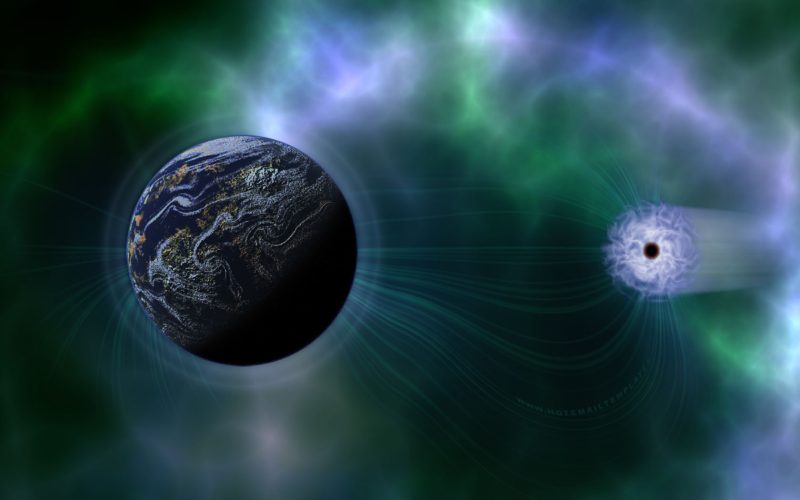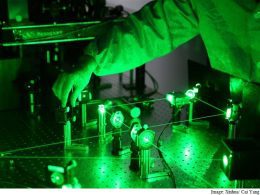Gravitational waves, predicted by Albert Einstein over a century ago as a consequence of his General Theory of Relativity, represent one of the most profound phenomena in astrophysics. These waves are disturbances in the curvature of spacetime caused by the acceleration of massive objects, such as merging black holes or neutron stars. Unlike electromagnetic waves, gravitational waves propagate through the universe, carrying information about their origins and the nature of gravity itself.
Theoretical Basis: Einstein’s General Theory of Relativity
Einstein’s General Theory of Relativity revolutionized our understanding of gravity by conceptualizing it as the curvature of spacetime caused by the presence of mass and energy. According to this theory, massive objects distort the fabric of spacetime, much like a heavy ball placed on a stretched rubber sheet. When these objects accelerate or undergo asymmetric motion, they emit gravitational waves that propagate outward at the speed of light.
Detection Methods
Interferometry
Interferometric techniques form the basis of gravitational wave detection. By measuring tiny changes in the length of interferometer arms caused by passing gravitational waves, scientists can infer the presence and characteristics of these waves.
Laser Interferometer Gravitational-Wave Observatory (LIGO)
LIGO, consisting of two identical interferometers in the United States, made history in 2015 by detecting gravitational waves for the first time. Since then, it has become a cornerstone of gravitational wave astronomy, enabling the detection of numerous events, including black hole mergers and neutron star collisions.
Virgo
Located in Italy, the Virgo interferometer collaborates with LIGO to improve the localization of gravitational wave sources and enhance the overall sensitivity of the detectors.
Historic Milestones
The detection of gravitational waves by LIGO marked a significant milestone in the field of astrophysics, confirming a key prediction of Einstein’s theory and opening a new window onto the universe. Subsequent detections, such as the observation of binary neutron star mergers, have further enriched our understanding of cosmic phenomena.
Impact on Astrophysics
Gravitational waves offer unique insights into some of the most extreme events in the universe, such as the collision of black holes and the formation of neutron stars. By studying the gravitational waves emitted during these events, scientists can test theories of gravity, probe the nature of compact objects, and explore the dynamics of cosmic evolution.
Gravitational Waves and Black Holes
The detection of gravitational waves from merging black holes has provided unprecedented evidence for the existence of these enigmatic objects and offered insights into their properties, including their masses, spins, and distributions across cosmic time.
Cosmological Implications
Gravitational waves also hold implications for cosmology, the study of the universe on the largest scales. By observing the cosmic microwave background radiation and primordial gravitational waves, scientists hope to glean insights into the early universe and the processes that shaped its evolution.
Future Prospects: Space-based Detectors
Proposed space-based detectors, such as the Laser Interferometer Space Antenna (LISA), aim to expand the observational capabilities of gravitational wave astronomy by detecting lower frequency waves that are inaccessible to ground-based detectors.
Challenges and Limitations

Despite their groundbreaking discoveries, gravitational wave detectors face challenges such as mitigating noise sources, improving sensitivity, and distinguishing signals from background noise. Overcoming these obstacles will be crucial for advancing the field and unlocking new discoveries.
Applications beyond Astrophysics
Beyond astrophysics, gravitational wave technology has potential applications in fields such as geology, navigation, and fundamental physics research. For example, future gravitational wave detectors could enhance earthquake detection and contribute to the development of precision navigation systems.
Public Interest and Outreach
The detection of gravitational waves has captured the public imagination, inspiring awe and curiosity about the nature of the universe. Outreach efforts by scientific institutions and media outlets have helped disseminate knowledge about gravitational waves and their implications for our understanding of the cosmos.
Ethical Considerations
As gravitational wave research continues to advance, it is essential to consider ethical implications, including the equitable distribution of resources, the responsible use of technology, and the implications for society and the environment.
Conclusion
Gravitational waves represent a revolutionary tool for exploring the universe and testing fundamental theories of physics. With ongoing advancements in detector technology and data analysis techniques, the field of gravitational wave astronomy is poised for continued growth and discovery, offering new insights into the nature of spacetime, gravity, and the cosmos.
FAQs
What causes gravity waves?
gravity waves are caused by the acceleration or motion of massive objects, such as merging black holes or neutron stars.
How are gravity waves detected?
gravity waves are detected using interferometric techniques, which measure tiny changes in the length of interferometer arms caused by passing gravity waves.
What is the significance of detecting gravity waves?
The detection of gravity waves confirms key predictions of Einstein’s theory of relativity and offers insights into some of the most extreme events in the universe.
What are the future prospects for gravitational wave astronomy?
Future prospects include the development of space-based detectors, such as LISA, which will expand the observational capabilities of gravitational wave astronomy.
How do gravity waves benefit society beyond astrophysics?
Gravitational wave technology has potential applications in fields such as geology, navigation, and fundamental physics research, with implications for earthquake detection and precision navigation systems.












